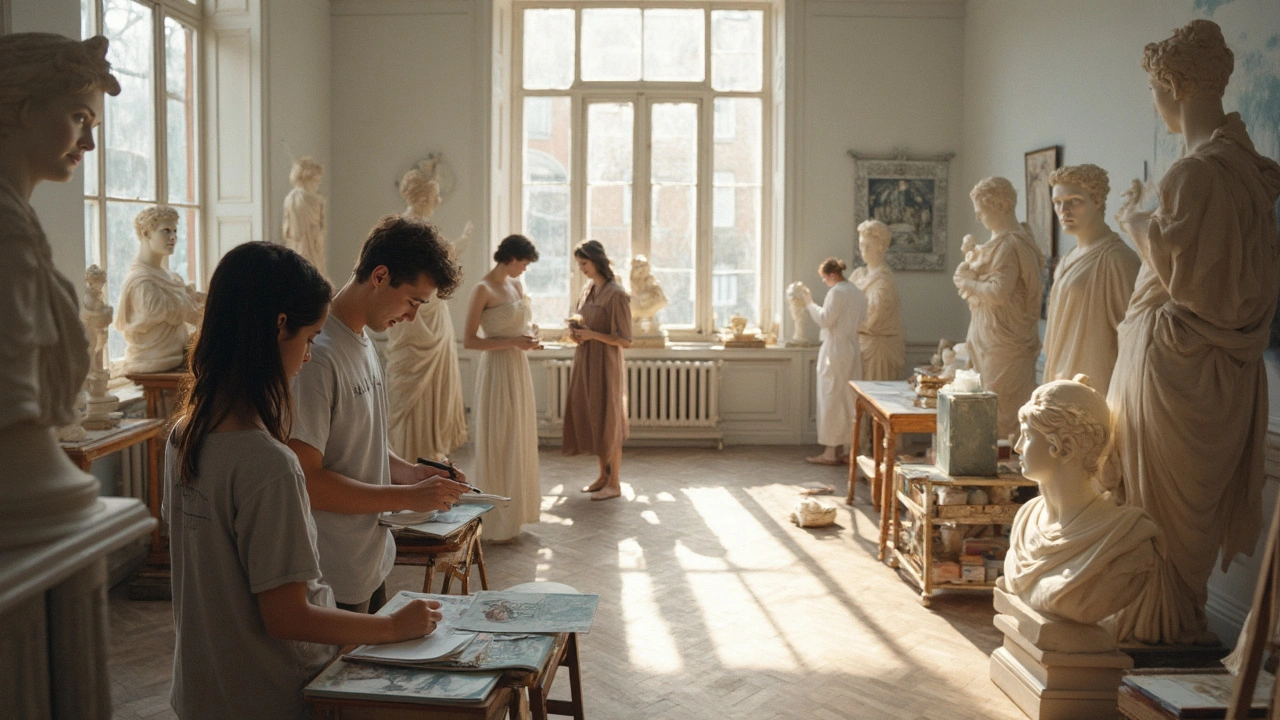Classical art: what it is and why it still matters
White marble statues you see in museums were originally painted bright colors. That single fact flips how you think about classical art: it was bold, public, and meant to be seen by everyone.
What classical art means
Classical art refers to styles built around balance, clear forms, and believable figures. Start with ancient Greece and Rome - artists focused on anatomy, ideal proportion, and myths. The Renaissance revived those rules and added drama, perspective, and refined techniques like oil painting and linear perspective. Even later movements such as the Baroque borrowed classical ideas but pushed for stronger emotion and movement. Materials matter: marble, bronze, fresco, and later oil on canvas shaped how artists worked and what viewers saw.
What makes a work 'classical' in practice? Look for harmony and order. Faces and bodies are often idealized: not exact portraits but versions that aim for a perfect proportion. Composition favors clear shapes and a readable flow from one figure to the next. Light is used to model form rather than to confuse the scene. Narrative and symbolism are common - gods, heroes, civic scenes, and moral tales show up again and again. Technique-wise, you'll notice careful draftsmanship, layered surfaces, and a focus on how light plays on volume.
How to look at and learn from classical art
Want to actually learn from classical art? Start with focused looking. Pick one painting or sculpture and spend ten minutes noting shapes, lines, and where your eye goes first. Ask: how did the artist direct my attention? Try quick sketches of small sections instead of copying the whole work. That trains your eye to understand structure and form.
If you want hands-on practice, copy studies made by old masters. Use charcoal for value studies, then graduate to layered paint approaches used in the Renaissance: underpainting, glazing, and final highlights. For sculptors, small clay maquettes help you understand weight and balance. Museums like the British Museum, Louvre, and the Prado have great online collections if you can't visit in person.
For collectors and casual viewers, start small: prints, museum catalogues, and good-quality photo books let you build knowledge without huge expense. When buying, check provenance and condition - classical reproduction prints are safe; original old master works require expert verification.
Classical art is not a dry museum label. It's a toolkit for making clear, powerful images. Whether you're sketching for fun, studying technique, or curating a room, classical principles of proportion, light, and composition remain useful today. Explore examples tagged here, try a short study routine, and you'll start seeing classical rules everywhere in modern design and film.
Key names to know: Phidias and Polykleitos for ancient sculpture, Raphael and Leonardo for Renaissance painting, and Caravaggio for early Baroque drama. Look up high-quality photos of their work and compare how they handled anatomy, drapery, and light. A simple study routine: 15 minutes of value sketches, 20 minutes copying a small area, and 10 minutes noting techniques you can try next time. Do this twice a week and you'll notice steady improvement. Keep notes on progress and celebrate small wins.


